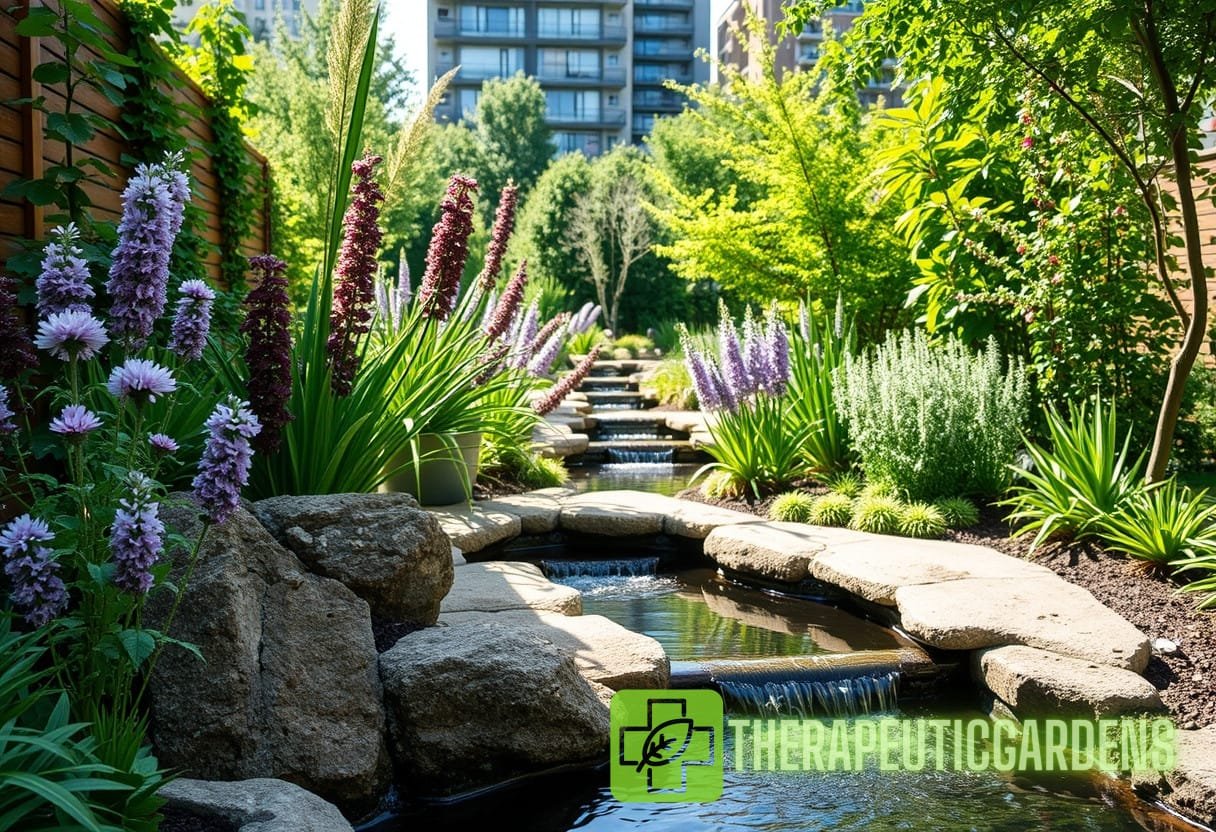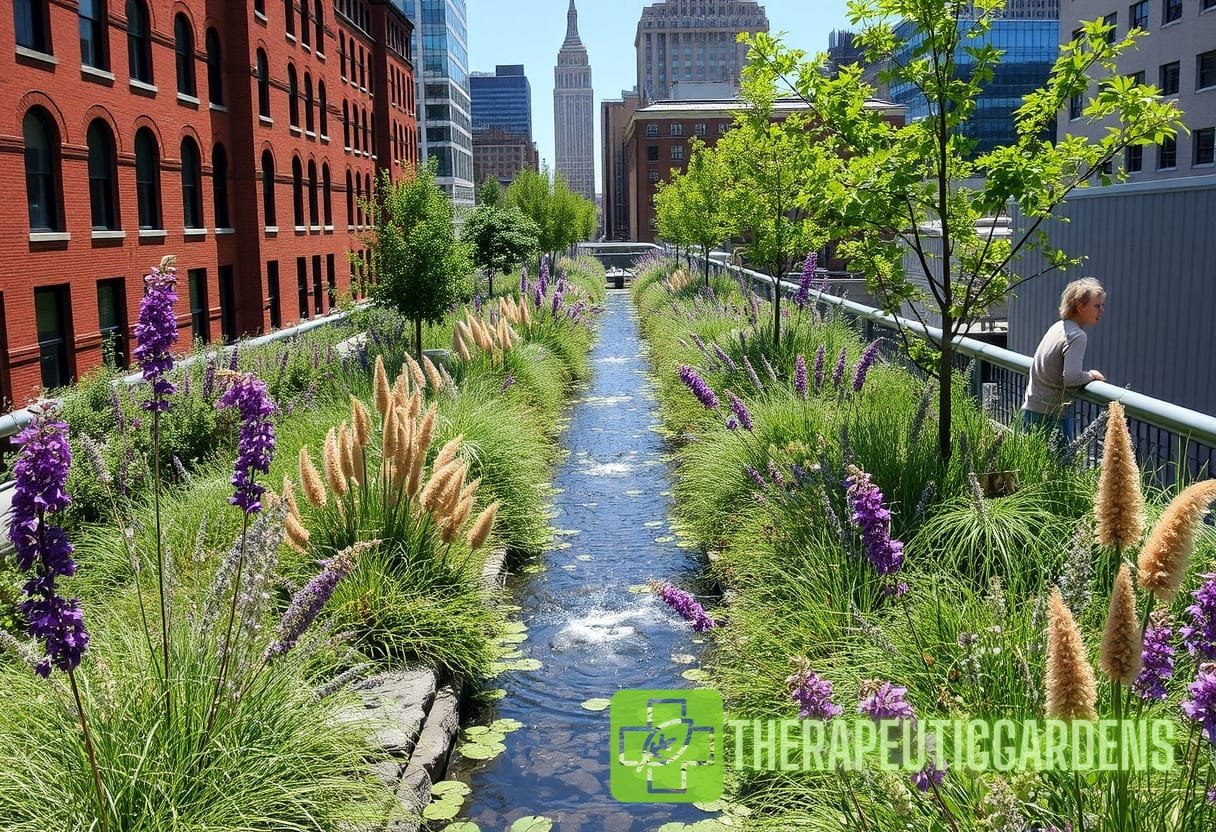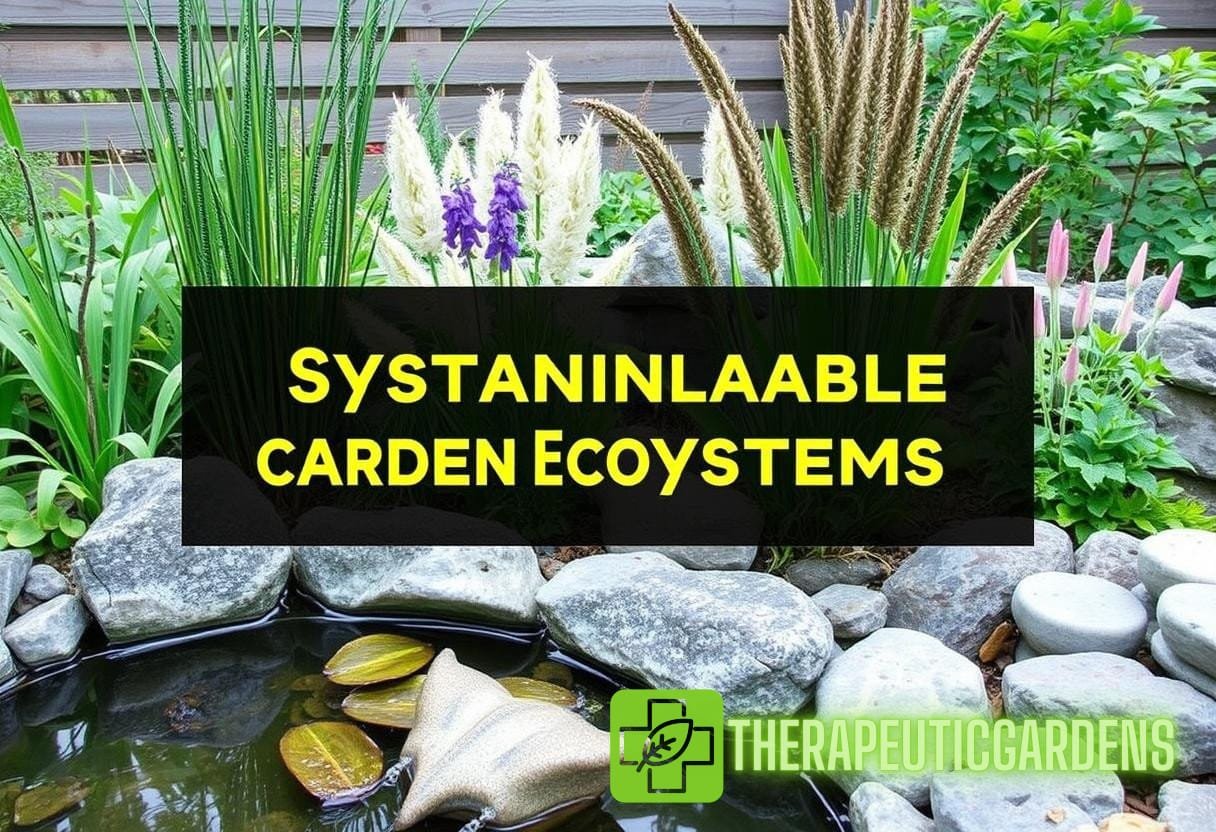Designing Resilient Landscapes: Innovative Strategies for Harmonizing Water Features and Native Flora in Sustainable Urban Gardens
The concept of resilient urban gardens is more critical than ever as cities face escalating climate-related challenges, such as severe flooding and prolonged droughts. By merging water features with native flora, urban spaces can not only look appealing but also contribute to sustainability. This guide will delve deep into innovative strategies for designing these robust landscapes, ensuring ecological integrity while accommodating the complexities of urban life.
Understanding Resilient Urban Gardens
Resilient urban gardens are designed to withstand environmental stressors while efficiently utilizing resources. They incorporate water features that complement native plants, creating ecosystems that can thrive in the face of climate challenges. According to a 2020 report by the U.S. Environmental Protection Agency (EPA), urban environments account for a significant portion of the country’s greenhouse gas emissions. Therefore, designing sustainable gardens has become a focal point for mitigating these effects.
Here are some defining features of resilient urban gardens:
- Use of Native Flora: Native plants are adapted to local climate and soil conditions, making them more resilient and requiring less water and maintenance.
- Integrated Water Management: Smart water features, such as rain gardens and bioswales, help manage stormwater and prevent flooding.
- Habitat Creation: These gardens support local wildlife, contributing to biodiversity.
- Social Engagement: Urban gardens promote community involvement and education regarding sustainability practices.
Benefits of Combining Water Features with Native Plants
Integrating water features with native flora offers various benefits both environmentally and aesthetically. The synergy between water management and biodiversity results in healthier ecosystems and more resilient urban gardens.
- Improved Microclimates: Water bodies can moderate temperatures and create microhabitats beneficial for various species.
- Enhanced Aesthetic Value: Water features add visual interest, providing a serene environment for urban dwellers.
- Pollution Reduction: Water gardens can filter pollutants, improving water quality before it enters storm drains.
- Education and Outreach: Such landscapes serve as example sites for educational initiatives focusing on sustainability.
Key Strategies for Designing Resilient Urban Gardens
Implementing effective strategies is crucial for successfully designing resilient urban gardens. Below, we explore various approaches that can aid in the harmonious integration of water features and native flora.
1. Selecting Appropriate Native Plants

Choosing the right native plants is foundational in creating functional and resilient landscapes. Conduct thorough research to identify species that thrive in local conditions. Here are some tips:
- Consult Local Extension Services: Utilize resources like the Cooperative Extension System for region-specific plant recommendations.
- Utilize Native Plant Nurseries: Support local nurseries that specialize in native species, ensuring local genetic diversity.
- Diversity is Key: Plant a variety of species to create a balanced ecosystem capable of adapting to change.
2. Incorporating Water-Saving Techniques
Water conservation is crucial in the era of climate change. Techniques can include:
- Rainwater Harvesting: Install barrels to collect rainwater for irrigation, providing a sustainable water source.
- Drip Irrigation: Use efficient drip systems to minimize water loss while ensuring plant hydration.
- Mulching: Apply organic mulch around plants to retain moisture and suppress weeds.
3. Creating Functional Water Features
Water features can be transformative elements in urban gardens. From ornamental ponds to functional rain gardens, consider implementing:
- Rain Gardens: Designed to manage runoff by allowing water to infiltrate the ground while supporting native plants.
- Permeable Paving: Use permeable materials for pathways to facilitate water infiltration and reduce surface runoff.
- Wildlife Ponds: Create shallow ponds that provide habitats for local wildlife such as amphibians and beneficial insects.
4. Engaging Community Collaboration
Building resilient urban gardens should be a community effort. Engage local residents through:
- Workshops: Conduct workshops on sustainable gardening practices and the importance of native species.
- Volunteer Days: Host community events to facilitate hands-on participation in garden design and maintenance.
- Educational Programs: Collaborate with schools and educational organizations to foster awareness about biodiversity and environmental stewardship.
Case Studies of Successful Urban Garden Designs

Examining successful examples can inspire and inform your design process. Here are two notable case studies that showcase resilient urban gardens.
Case Study 1: The High Line – New York, NY
The High Line is an elevated linear park that was transformed from an old railway line. The design integrates native plants with sustainable water management practices, creating diverse habitats in a bustling urban environment. Sustainable features include:
- Use of Native Flora: The design features over 200 species of plants, many of which are native to the New York area.
- Rainwater Management: Incorporates drainage systems allowing rainwater to nourish the plants while preventing erosion.
- Biodiversity Support: The park supports local fauna, including birds and butterflies.
Case Study 2: The Edible Schoolyard Project – Berkeley, CA
The Edible Schoolyard is an innovative initiative that combines vegetable gardening and native plant landscaping in an educational setting. Water features are integrated into the design, enhancing learning and ecological awareness. Notable aspects include:
- Hands-On Learning: The garden serves as a living classroom for students to learn about sustainability and ecology.
- Native Plant Inclusion: Integrating native flora supports pollinators and creates habitat diversity.
- Water Sustainability: Features like a rainwater collection system are employed to teach students about resource conservation.
Best Practices for Maintenance and Sustainability
Ensuring the longevity of resilient urban gardens requires ongoing maintenance and sustainable practices. Here are some best practices:
- Regular Monitoring: Conduct regular assessments of plant health and water features to address any issues promptly.
- Adaptive Management: Be willing to adapt your garden practices based on environmental changes and new research.
- Community Stewardship: Encourage community members to take ownership of garden maintenance through organized stewardship programs.
Concluding Thoughts on Designing Resilient Urban Gardens
Designing resilient urban gardens harmonizing with water features and native flora is a forward-thinking approach to sustainability. These gardens are not merely decorative; they offer a myriad of ecological, community, and aesthetic benefits. Integrating strategies that prioritize ecological integrity will pave the way toward creating thriving urban ecosystems. By fostering collaborative community dynamics and employing scientifically-backed gardening methods, urban landscapes can remain vibrant and resilient amidst the changing climate.
For further insights into sustainable gardening practices, check out our articles on native plants and their ecosystem benefits and sustainable gardening techniques. By prioritizing these aspects, urban gardeners can contribute to the resilience of their communities while enjoying the splendor of nature.



